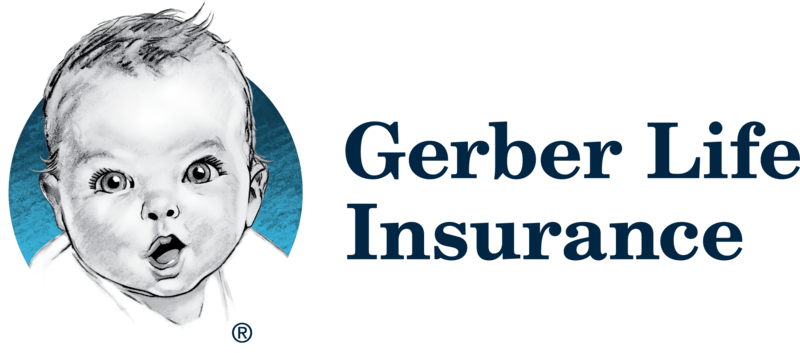5 Best Whole Life Insurance Companies
Whole life is a type of permanent life insurance that provides coverage for the life of the insured as long as premiums are paid on time. Whole life insurance guarantees a fixed death benefit for the beneficiaries and a savings component called “cash value” for the policyholder.
We selected the best whole life insurance companies and prepared a guide to support you in choosing the best life insurance policy for you.
Our Top Picks for the Best Whole Life Insurance Companies
- New York Life - Best for flexible payment options
- Ethos - Best whole life insurance for seniors
- Nationwide - Best for riders
- State Farm Life Insurance - Best for a variety of whole life policies
- Gerber Life Insurance Company - Best whole life insurance for children and young adults
Best Whole Life Insurance Reviews
- Customize your premiums with Custom Whole Life
- Long history of paying dividends
- Whole life policies for 90-year-olds
- Broad selection of riders
- Fewer NAIC complaints than other companies of its size
- Not all riders are available in every state
- No online application
- No mobile app
Why we chose it: New York Life’s Custom Whole Life policy allows policyholders to customize the payment schedule to pay off the policy earlier. Policyholders can choose to pay premiums annualy, semi-annually or through an automatic bank drafting method monthly.
New York Life offers two whole life insurance options: Whole Life and Custom Whole Life.
- Whole Life: policyholders have access to the cash value and can receive annual dividends
- Custom Whole Life: policyholders pay level premiums only for a specific period of time. This means that if you purchase a Custom Whole Life policy with New York Life for 20 years, you’ll be paying higher premiums during this time but don’t have to pay premiums after you retire.
Both policies — Whole life and Custom Whole Life — are customizable through various riders, including the accidental death benefit, chronic care and disability waiver of premium. Policyholders can access the cash value component through loans or withdrawals.
New York Life's whole life policies are only available through agents or over the phone. In addition, the company is rated “A++” by A.M. Best.
- No medical exam required
- Policy will be active after making the first premium payment
- Policy can be canceled within the first 30 days
- Life insurance calculator
- Agents are available for customer support and orientation
- Policy will lapse 31 days after a missed payment
Why we chose it: If you are between the ages of 66 to 86, Ethos guarantees coverage at the rates provided when you apply, regardless of your health, pre-existing conditions, or risk factors.
Ethos’s Whole Life Insurance for Seniors doesn’t require a medical exam and provides instant online approval, making it a great option for seniors who don’t want the hassle of medical exams, insurance agents, or complicated applications.
Some of Ethos’ whole life policies have a graded death benefit between $10,000-$30,000. This means that your beneficiaries may get the full benefit amount (premiums paid plus interest) if you die a non-accidental death (illness, disease and old age) within the first three years after buying coverage.
Even though Ethos only offers an online application, non-commission agents are available over the phone to answer questions and provide customer support. Ethos also offers term life policies with a full online application and same-day approval. This company is rated “A” by A.M. Best.
- Customize your policy with riders for an additional charge
- $10,000 minimum coverage
- Strong financial standing with an A.M Best rating of A+
- Mobile app available for iOS and Android
- No online application
Why we chose it: Nationwide offers seven different riders to customize your whole life insurance policy.
Nationwide offers two payment options for their whole life policies: Whole Life 100 and 20-Pay Whole Life. With Whole Life 100, premiums are the same until they stop when you turn 100 or die. On the other hand, with a 20-Pay Whole Life, premiums are the same until the policy is paid after 20 years.
Nationwide customers can also customize their whole life insurance policies with the following riders:
- Chronic illness rider - Policyholders can request a portion of their death benefit early if diagnosed with a permanent chronic illness.
- Critical illness rider - Policyholders can request a portion of their death benefit early if diagnosed with a critical illness like cancer.
- Terminal illness rider - Policyholders can request a portion of their death benefit early if diagnosed with a terminal illness.
- Accidental death benefit rider - Beneficiaries will receive additional funds on top of your regular death benefit if you die in an accident
- Children’s term insurance rider - Your children are covered until their reach the age of 22 or until they are married.
- Guaranteed insurability benefit rider - Guarantees policyholders the right to buy additional permanent life coverage.
- Premium waiver rider - If you become disabled, this rider will credit a monthly premium to your policy after a six-month elimination period.
Customers can access their policy, file claims and pay premiums through Nationwide’s online dashboard or mobile app. However, you can only purchase whole life, term and other permanent policies over the phone.
- Claims can be filed online or over the phone
- Discounts available for bundling auto and life insurance policies
- Claims can be submitted online or over the phone
- Calculator for your life insurance needs
- Not available in Massachusetts
- Only available through agents
Why we chose it: State Farm’s variety of whole life options, including term to whole convertible policies have earned it a top spot in our list.
State Farm stands out for its four different whole life policies: traditional Whole Life, Limited Pay, Single Premium and Final Expense. These policies offer different premium payment options, coverage limits and riders.
- Traditional Whole Life: Guarantees lifetime coverage, level premiums and cash value accumulation. The premium stays the same your entire life.
- Limited Pay Whole Life: Policyholders pay premiums for 10, 15, or 20 years. Once all premiums are paid, the coverage continues.
- Single Premium: Policyholders pay a one-time premium to enjoy a lifetime of coverage.
- Final expense: Available for policyholders between the ages of 50 to 80, this policy provides $10,000 in coverage for funeral expenses
In addition, policyholders can convert a qualifying term life policy into whole life, lowering premiums during the first year. Policyholders must be 75 years or younger to qualify. This is a good option for those who currently cannot afford a whole life premium but are interested in having a life insurance policy with cash value in the future.
State Farm has been rated “A++” by A.M. Best.
- Coverage from $50,000 to $300,000
- Application available online or via phone
- No medical exam for policies of less than $100,000
- 10% off premiums with autopay
- Access your account online
- No riders available
Why we chose it: Gerber Life offers whole life insurance for children 14 days - 14 years old that builds cash value.
Gerber Life Insurance provides whole life coverage starting at $50,000 and going up to a million dollars. However, a medical exam is required for customers over 52 years old who want to purchase more than $100,000 in coverage.
There are two types of whole life insurance policies: Traditional Whole Life and Child Life Insurance (Children Life Grow-Up Plan and Young Adult Plan)
Traditional Whole Life: covers policyholders between the ages of 18 and 70
Child Life Insurance:
- Children Grow-Up Plan: Parents can buy coverage for children (aged 14 days to 14 years). Coverage starts at $5,000 to $50,000.
- Young Adult Plan: Parents can buy coverage for young adults (aged 15 to 17 years). Coverage starts at $5,000 to $50,000.
When the child turns 18 years old, the coverage amount doubles, at no extra cost. This policy also guarantees that additional coverage can be purchased, regardless of health status or occupation, after the insured reaches the age limit.
Gerber Life’s portfolio includes term, guaranteed life, accident protection and insurance policies for seniors. The company has been rated “A” by AM Best.
Other whole life insurance companies we considered
The following companies didn’t meet all the criteria to be part of our top picks. However, their whole life policies might fit your insurance needs.
American Family Insurance
American Family Insurance offers whole life insurance for children with the option to choose between a 10-year or a 20- year payment option. This company is not part of our top list for its high NAIC complaint index, limited riders and lack of information about coverage amounts and payment options.
- Offers four types of whole life policies, including whole life for seniors
- Life insurance calculator
- Might earn dividends
- High NAIC complaint index
- Lack of information on website
- Limited riders
- Only available through agents
Northwestern Mutual
Northwestern Mutual’s whole life insurance includes two limited payment policies: 65 Life and 90 Life. This company stands out for its low customer complaint ratio and helping customers select a policy tailored to their financial needs and goals. It’s not part of our top picks because of the lack of information on its website.
- Two types of whole life policies
- Whole life policies can be paid monthly or yearly
- Website lacks information
- Only available through financial planners
Farmers Insurance
Farmers Insurance offers two whole life policies. Its non-exam policy, Graded Whole Life, provides coverage from $5,000 to $30,000 and a variety of riders for customization. The company didn’t make it to our top list because of its high number of customer complaints.
- Two whole life policies that don't require a medical exam
- Insures people between the ages of 15 days and 80 years
- Online quotes
- Mobile app for iOS and Android
- Only available through agents
- High complaint index
Penn Mutual
Penn Mutual’s portfolio includes one whole life policy that can be customized with more than 10 different riders. Penn Mutual’s website lacks an FAQ section and overall policy information.
- More than 10 different riders to customize policies
- Offers whole and term life insurance policies
- Custom policy payments
- Low NAIC complaint
- One whole life policy
- Not available in NY
- Website lacks information
- Only available through financial advisors
Allstate
Allstate’s insurance portfolio includes term, universal and variable universal insurance policies. This company is not part of our top list because of its high NAIC complaint index and limited information about whole life policies and riders on their website.
- Might earn dividends
- Online life insurance calculator
- Free medical exam
- Whole life policy quotes are only available through the phone
- High NAIC complaint index
- Lack of information on the website
Globe Life
Globe Life no-exam whole life policy can be purchased online and is active after completing the first premium payment. Its limited variety of whole life policies and riders kept it from our list of top picks.
- No-exam whole life policy
- Autopay available
- Mobile app for iOS and Android
- Only one type of whole life policy
- Limited rider availability
- Lack of information on the website
Whole Life Insurance Guide
In this guide, you can find information about the different types of whole life policies, riders, dividends and costs.
What is whole life insurance?
A whole life policy is a type of permanent life insurance that provides a guaranteed death benefit that builds cash value.
There are different types of whole life insurance policies. The most common types of whole life policies are:
- Limited payment whole life: the whole policy is paid in a pre-established number of years
- Single-premium whole life: the policy is paid in only one payment
- Final expense: a smaller death benefit to cover funeral expenses, medical or legal issues
- Indexed whole life: the cash value component grows based on indexed fund performance
- Variable whole life: includes a cash value, variety of investment options such as stocks and bonds, flexible premiums, and death benefit
How does whole life insurance work?
Whole life insurance policies provide permanent protection, a tax-free death benefit and cash value. In most cases, it earns dividends. The cash value component is an investment feature that allows the policy owner to access investment earnings during their lifetime through loans or withdrawals. Policyholders can use cash value earnings to pay for college tuition, supplement retirement income, or for a down mortgage payment.
The cash value is a living benefit, and when the policyholder dies, the insurance company keeps the earnings from the cash value component.
The options available vary depending on the life insurance company. Loans, interest accrued, and withdrawals taken from the cash value earnings must be paid back, or the policy will lapse, resulting in the loss of coverage.
Our guide to What is Whole Life Insurance provides more detailed information about whole life insurance products and how they work.
Dividends and riders
Dividends are a portion of the insurance company’s earnings received annually by qualified permanent policy owners. The amount received will depend on the company’s earnings that year and is not guaranteed. Policyholders can use dividends to pay for premiums, reinvestment in the cash value component, or cash payment.
Riders are extra coverage add-ons for life insurance policies purchased at an additional cost. Not all insurance companies offer the same riders, but the most common are:
- Accelerated death benefit: provides access to the policy’s death benefit if the insured is diagnosed with a terminal illness
- Waiver of premium: waives premium payments if the insured becomes disabled and is unable to work for more than six months or they become critically ill
- Children’s term insurance: provides benefits to cover funeral expenses, hospital bills, or other expenses in the death of the insured’s child. This rider covers children until they turn 22 years old.
Adding a rider to a whole life insurance policy means higher monthly premiums. Make sure you need the additional coverage and that it fits your budget and financial plans.
How much is whole life insurance?
A whole life insurance policy provides permanent protection as long as monthly premiums are paid. That said, the cash value component and death benefit amount combined result in higher premiums.
Riders and dividends also influence the policy’s cost and will make monthly premiums higher since they provide added protection and coverage. Policyholders can use dividend earnings to pay premiums and lower the policyholder’s out-of-pocket expenses.
The cash value earnings can cover monthly premiums, but it’s important to keep in mind that the cash value is not immediately available. In most cases, it can take up to two years for the cash value to be accessible through withdrawals or loans.
Whole life insurance cost factors
The cost of a whole life insurance policy is determined by the type of whole life policy, the death benefit amount and information about the future policy owner.
When underwriting a whole life policy, insurance companies take into consideration the following information about the future policy owner:
- Age
- Gender
- Height and weight
- Location
- Substance use
- Criminal history
- Credit history
- Hobbies, or the performance of other dangerous activities
Whole vs. term life insurance
| Whole life insurance | Term life insurance |
| Permanent coverage | Covers in terms of 10-30 years and then expires |
| Cash value component | No cash value or investment component |
| Monthly premiums are usually higher | Monthly premiums are lower |
| Earns dividends | Doesn’t earn dividends |
Many life insurance companies offer the option to convert a policy from term to whole life.
How much whole life insurance do I need
The death benefit in a life insurance policy should be based on the financial needs and goals of the future policy owner. When choosing the death benefit, the future policy owner should consider the number of dependants, yearly salary, debt and inflation.
Enough coverage should be bought to cover at least the insured’s final expenses. Most financial advisors recommend that the policy’s coverage amount be at least 10 to 15 times the amount of the insured’s yearly income.
Whole Life Insurance FAQ
What is whole life insurance and how does it work?
Which is better term or whole life insurance?
Is whole life insurance worth it?
What are the benefits of whole life insurance?
How We Chose the Best Whole Life Insurance Companies of 2022
As part of our methodology to select the best whole life insurance companies of 2022, we considered the following:
- The insurance company’s complaint index with the National Association of Insurance Commissioners (NAIC)
- Financial strength rating with A.M Best
- Variety of whole life insurance policies
- Customizable riders
Summary of the Best Whole Life Insurance Companies of 2022
- New York Life - Best for flexible payment options
- Ethos - Best whole life insurance for seniors
- Nationwide - Best for riders
- State Farm Life Insurance - Best for a variety of whole life policies
- Gerber Life Insurance Company - Best whole life insurance for children and young adults











